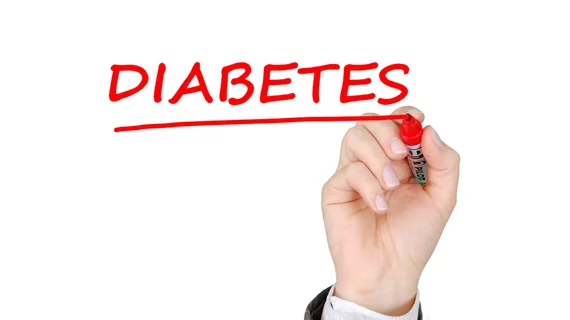Imaging-unsafe continuous glucose monitors present new challenge for radiology practices
The popularity of continuous glucose monitors has surged in recent years, presenting a new challenge for radiology practices, experts cautioned on Tuesday.
Such devices are considered unsafe when worn during MRI, CT and X-ray exams, but patients aren’t always willing to remove them. In one recent incident, a male patient showed up for outpatient chest imaging wearing a glucose monitor. When asked to take the device off, the individual declined, since he was only on day 5 of the sensor’s 10-day cycle.
The patient had no idea of the need to remove the device, did not bring a backup and was concerned about the cost—replacements can run between $60 to upward of $300. While the referring physician eventually rescheduled, the damage was already done, noted Lora Hromadik, PhD, and Daniel Lapic, with the Indiana University of Pennsylvania and the University of Pittsburgh Medical Center, respectively
“Although this seems like an easy solution, the scans were delayed by five days; the patient made multiple trips to the imaging department costing him time and money; patient care and medical decisions were delayed; and the disruption to the CT department schedule delayed table times for subsequent patients,” the two wrote March 16 in the Journal of Radiology Nursing. “These delays and disruptions were easily avoided with proper planning and coordination of care.”
Preparing for this “unique patient safety challenge” will require better communication at all levels, from patients to technologists. Providers must understand how these monitors work and cost implications for individuals, the authors added. Typically, a small transmitter is placed somewhere on the body beneath the skin. The life of a sensor can last anywhere from seven days to three months, with safety warnings for most major models recommending removal of the transmitter and sensor prior to imaging exposure.
Hromadik and Lapic advise coordinating scheduling of radiology scans at the time of the CGM change to help decrease the possibility of a patient wearing a malfunctioning unit afterward. And preprocedural patient education should cover the removal requirement prior to imaging to avoid last-minute surprises.
“Patients make insulin and lifestyle decisions based on the glucose readings from their monitors; therefore, keeping them functioning properly equates to good patient care,” the authors advised.

